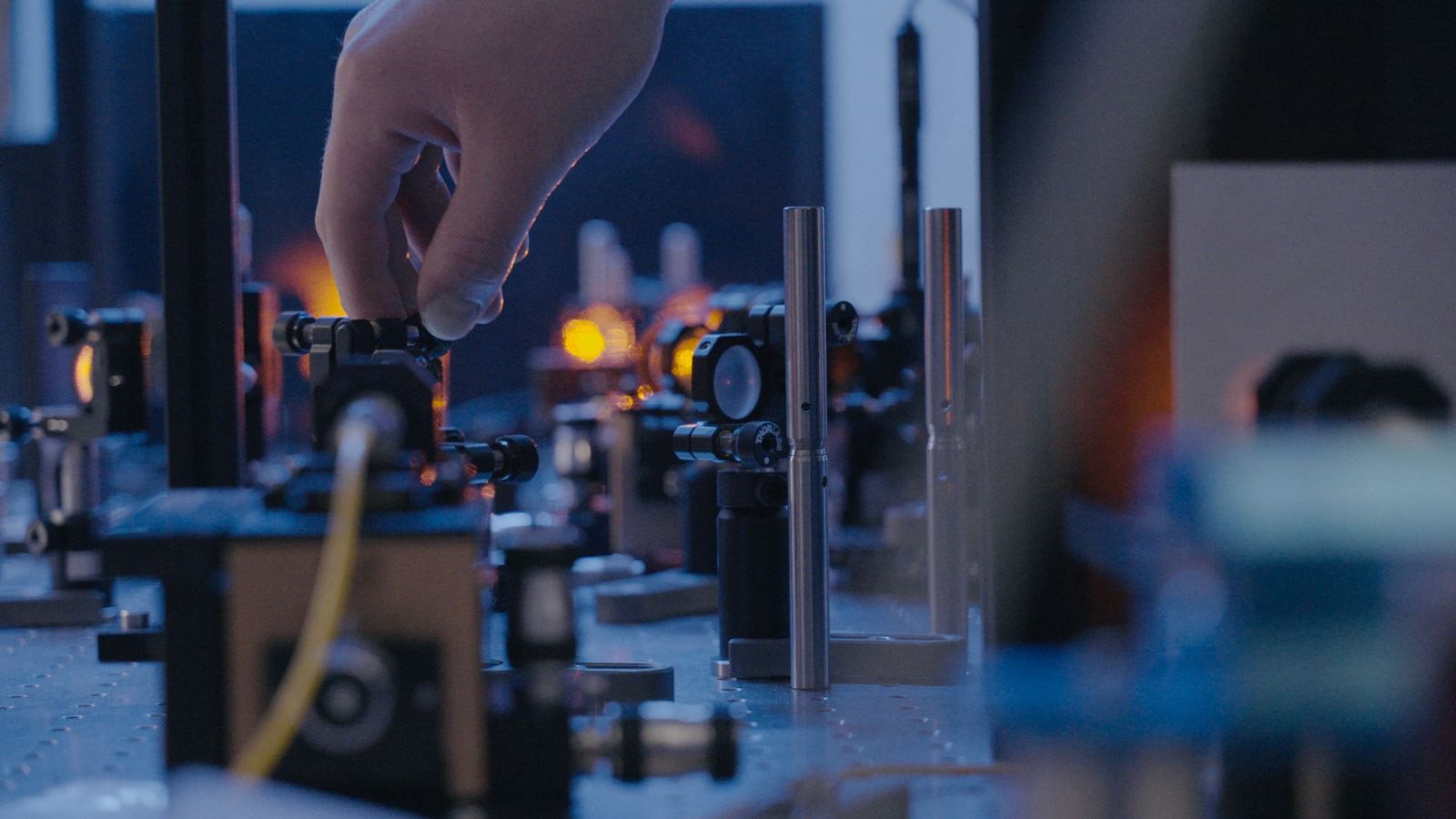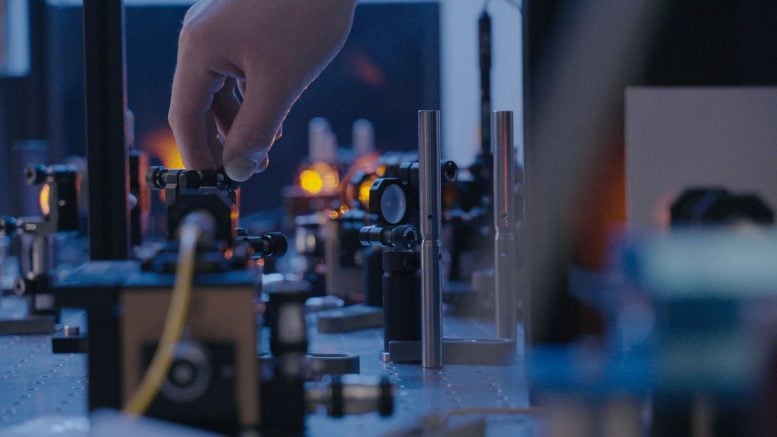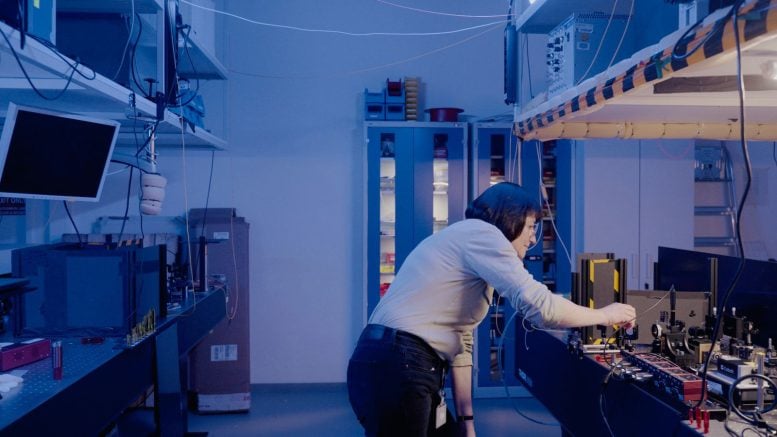

Research setup for the generation of photon pairs at the Max Planck Institute for the Science of Light. Credit: Tanya Chekhova
A groundbreaking study has demonstrated the use of liquid crystals for efficient and tunable spontaneous parametric down-conversion (SPDC), expanding the potential of quantum light sources beyond traditional solid materials.
Spontaneous parametric down-conversion (SPDC), a key method for generating entangled photons used in quantum physics and technology, has traditionally been restricted to solid materials. However, researchers at the Max Planck Institute for the Science of Light (MPL) and the Jozef Stefan Institute in Ljubljana, Slovenia, have recently achieved a breakthrough by demonstrating SPDC in a liquid crystal for the first time. Their findings, published in Nature, pave the way for the development of a new generation of quantum sources that are both efficient and tunable by electric fields.
The splitting of a single photon in two is one of the most useful tools in quantum photonics. It can create entangled photon pairs, single photons, squeezed light, and even more complicated states of light which are essential for optical quantum technologies. This process is known as spontaneous parametric down-conversion (SPDC).

Prof. Maria Chekhova, Head of Research Group ›Quantum Radiation‹ in her lab at the Max Planck Institute for the Science of Light. Credit: Tanya Chekhova
SPDC is deeply linked to central symmetry. This is the symmetry with respect to a point – for instance, a square is centrally symmetric but a triangle is not. In its very essence – a splitting of one photon in two – SPDC breaks the central symmetry. Therefore, it is only possible in crystals whose elementary cell is centrally asymmetric. SPDC cannot happen in ordinary liquids or gases, because these materials are isotropic.
Breakthrough in Liquid Crystals
Recently, however, researchers have discovered liquid crystals that have a different structure, the so-called ferroelectric nematic liquid crystals. Despite being fluidic, these materials feature strong central symmetry breaking. Their molecules are elongated, asymmetric and, most importantly, they can be re-oriented by an external electric field. Re-orientation of molecules changes the polarization of the generated photon pairs, as well as the generation rate. Given proper packaging, a sample of such material can be a very useful device because it produces photon pairs efficiently, can be easily tuned with an electric field, and can be integrated into more complex devices.
Using the samples prepared in Jozef Stefan Institute (Ljubljana, Slovenia) from a ferroelectric nematic liquid crystal synthesized by Merck Electronics KGaA, researchers at the Max-Planck Institute for the Science of Light have implemented SPDC, for the first time, in a liquid crystal. The efficiency of entangled photon generation is as high as in the best nonlinear crystals, such as lithium niobate, of similar thickness. By applying an electric field of just a few Volts, they were able to switch the generation of photon pairs on and off, as well as to change the polarization properties of these pairs. This discovery starts a new generation of quantum light sources: flexible, tunable, and efficient.
Reference: “Tunable entangled photon-pair generation in a liquid crystal” by Vitaliy Sultanov, Aljaž Kavčič, Emmanouil Kokkinakis, Nerea Sebastián, Maria V. Chekhova and Matjaž Humar, 12 June 2024, Nature.
DOI: 10.1038/s41586-024-07543-5